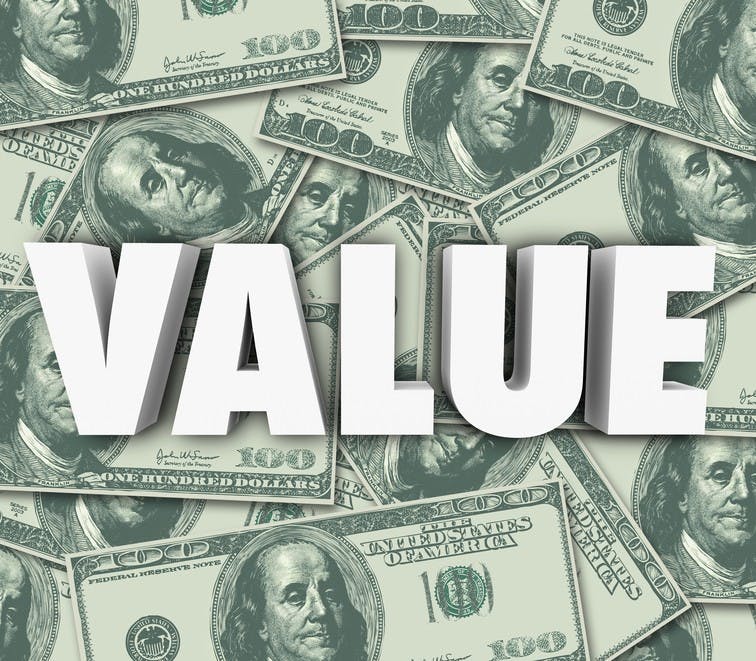Market cap, also known as market capitalization, is the total market price of a company's outstanding shares. It is also incorrectly known to some as "what the company is really worth" or, in other words, the value of the business.
Keep reading to learn more about why market cap doesn't always reflect a company's actual value.
Rule #1 Investing Calculators
Determine whether investing in a particular stock is a good idea or not
What Is Market Capitalization (and Why It’s Misunderstood)?
Also commonly referred to as "market capitalization," this term refers to the total market value of a company's outstanding shares. To put it another way, it's the amount of money it would require to buy the company outright in a single transaction.
Market Cap Formula and Common Misconceptions
Market cap is also incorrectly known as what the company is really worth. The market cap formula is simply this:
The per share price of a company x the total number of shares of that company = Market Capitalization
I want to be very clear about this: Market capitalization is about the price of a company. Nothing in that formula tells us anything about what that business is worth.
It's just what people are paying for it at the moment.
Just like auction prices can be inflated by emotionally driven bidding, market cap can balloon—or deflate—based purely on investor sentiment. It's a snapshot of market psychology, not business fundamentals. A business might be fundamentally sound but temporarily undervalued because the market is in a pessimistic mood.
Market Cap vs Intrinsic Value: What’s the Difference?
While market cap and the value of the business are each a measurement of corporate assets, they're each quite different. Market cap is a very straightforward calculation that simply tells us about the price of the company. It really only bears a passing resemblance to the value of the business.
The value of the business can also be a very straightforward calculation. You can find the business value by calculating the value based on your desired yield on earnings. You can calculate the value by knowing how many years you're willing to wait to repay your investment. Or you can do a simple business school calculation that depends on your estimate of the future growth of cash. More on these later.
How Does Market Cap Affect Stock Price?
Market Cap is derived directly from the stock price. Market cap is determined by taking the current price of one share, the stock price, and multiplying that by the number of a company's shares.
For example, a company with 10 million shares selling for $50 per share has a market cap of $500 million dollars; $50 x 10 million.
Why Market Cap Misleads Most Investors
The market cap of a business is the theoretical price at which the entire business can be bought. In practice, it is only the price some number of shares of the business can be bought at because if someone tried to buy all the available shares at once, the price would certainly rise.
Ivy League professors, regulators at the SEC, and your friendly financial advisor will almost certainly tell you that market cap is what a business is worth, AKA its "true value." That's simply not true because the market cap is influenced dramatically by the emotions of fear and greed. When the market is rising for a period of time, greed can kick in, and you'll find investors who will pay any price because they emotionally believe it's all going up forever. When the market is going down for a period of time, the opposite emotion can kick in … that the market is never going to go back up.
That feeling comes from fear.
This volatility means market cap can swing drastically in short periods of time. Consider companies during the COVID crash in 2020—strong, profitable businesses lost billions in market cap in weeks, not because their value changed, but because investor sentiment did. This disconnect is where opportunity lies for Rule #1 investors.
It's very important to understand that the market can move irrationally up or down based on the emotions of greed and fear. Neither emotion considers the value of the business at all.
Price is what you pay for something, but VALUE is what you get.
Let's say you go out and buy a new Maserati; we'll say that the car's value is $100,000. If I want that car so much that I'll pay $200,000 for it, that doesn't mean it's worth $200,000. That's just what I paid for the car. I may have massively overpaid for it because I want it so badly.
On the other hand, if there is a rumor that the new Maserati blows up when you stop at a red light, I might be able to buy that car for $20,000. That price also doesn't mean that it's worth $20,000. That's just what I paid. I may have just gotten the deal of the century or a death machine.
What's really important to understand about stock investing is that market cap is just what we pay. What we need to know, and this is how it relates to Rule One Investing, is what the company is worth. What is the company's value?
Why Understanding Value Over Price Is the Rule #1 Advantage
If we calculate the value of the business at $10 per share, but it's selling for $5, that's like buying a $10 bill for $5 bucks. The buy price, $5, times all the shares, is the market cap, and the market cap is not, according to my calculation, not the value. The value is twice as much as I paid. That stock is worth $10, but I only paid $5. Buying $10 bills for $5 is an almost certain way to get rich!
For example, during the 2008 financial crisis, shares of Ford dropped to around $1.01—even though the company wasn’t going bankrupt. Investors who calculated Ford's intrinsic value based on future cash flows saw a once-in-a-decade buying opportunity. As market sentiment improved, the price (and thus market cap) caught up to the true value, resulting in massive gains for value investors.
The biggest mistake that investors can make is to assume that whatever the market is charging for a company is what it's worth. Warren Buffett said,
"Nothing is further from the truth."
When you understand market capitalization and value, you've just taken your first major step to becoming a really great investor.
If you want to learn to value a company properly, click here to learn the 4Ms to successful investing.
Remember that market cap is just a reflection of the mood of the market. But the price created by the mood is very often not the true value of the business.
Ben Graham, Warren Buffett’s mentor, famously introduced the concept of “Mr. Market.” He imagined the stock market as a business partner who shows up every day with a new price—sometimes wildly optimistic, sometimes deeply pessimistic. Mr. Market’s emotional swings are your opportunity. Rule #1 investors don’t follow his mood—they take advantage of it. When he’s fearful, we buy great businesses on sale. When he’s euphoric, we sell.
Our job is to buy from our partner, Ben called him "Mr. Market" when he's fearful and pricing great companies quite cheaply. And we want to sell to Mr. Market when he's irrationally exuberant and pricing the businesses we own absurdly high.
Conclusion: Market Cap Is Just the Starting Point
Market cap might tell you what the market is feeling today—but it won't tell you what a business is truly worth. That’s why Rule #1 investors go deeper. By separating emotion from evaluation, and price from value, you gain the clarity to make smart, long-term investing decisions. And that’s how wealth is built—one undervalued business at a time.
There are three easy ways to find the value of the business and discover stocks that are worth twice what you can buy them for.
I've created a free guide on the subject and I have a calculator you can use to calculate market cap. These resources will help you navigate the tricky issue of price versus value.
If you want hands on training and guidance from myself and my team of certified coaches, join us at our next investing workshop! We LOVE teaching these strategies, it is our passion.
Attend a Rule #1 Workshop
Learn how to conduct research, choose the right companies for you, and determine the best time to buy.

